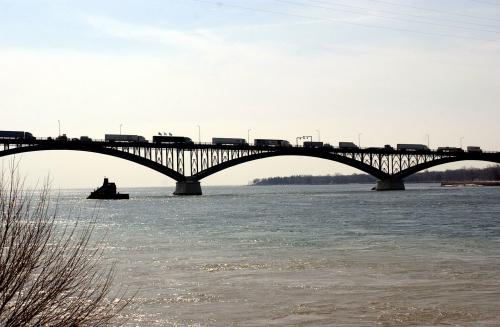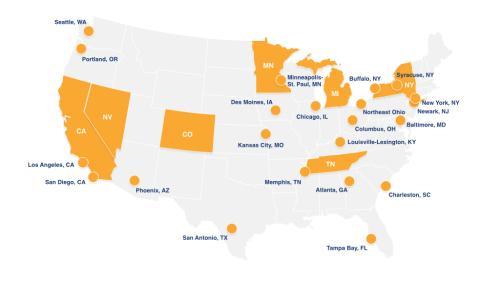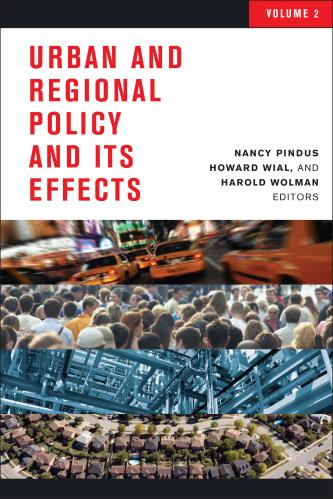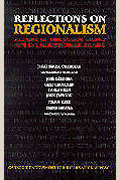The long running economic development tussle in Kansas City between Missouri and Kansas grabbed headlines for good reason. From 2009 to 2013, taxpayers footed the bill for $212 million in tax forgiveness only to move companies from one side of town to the other—3,300 jobs moved from Missouri to Kansas and 2,800 the other way. Missouri Governor Jay Nixon said at the time, “It’s bad for taxpayers. It’s bad for our state budget and it’s not good for our economy.” He was right.
One city. Two states. Two governors. Millions of economic development incentive dollars. No new economic expansion. Regrettably, stories like these litter the economic development landscape in America and demonstrate the need for a major overhaul. Ironically, it is state governments that have the opportunity to lead the industry forward into the 21st century.
Out of the Great Depression and the New Deal and into the urban tumult of the 1960s and 1970s, the economic development field expanded from rural efforts such as the Tennessee Valley Authority to urban strategies aimed at stemming the decline of the inner city. Well-intentioned financial tools, programs, and policies were developed to improve local economic competitiveness but devolved over the years into unnecessary subsidies and an alphabet soup of organizations claiming impact.
Most objective economic development professionals acknowledge that this simplistic approach merely redistributes jobs from one place to another. It might create eye-catching headlines, but it rarely creates anything new; and it is expensive. New Brookings research from Amy Liu underscores this fact.
Within this system, the state government’s role in modern economic development must change from being yet another service provider to leveraging its role as a disciplined investor—incentivizing consolidation, collaboration, and measurable outcomes. Fortunately, a roadmap of how to get there is unfolding, and it starts with states rethinking their relationship with metropolitan regions.
Step 1: Draw new maps, with regions at the center
The economy does not adhere to state lines on a map. Economies are regional and spillover local and state lines. As Oregon’s former chief economic development officer, I saw firsthand just how diverse a state’s economy can be – from potato and onion farming in the east, to lumber and wood products manufacturing on the coast, to the technology driven industries of Portland. Oregon is not unique in this sense. Every state’s economy is actually a mash-up of many regional economies. Consequently, regions should serve as the basic unit of state economic development and strategies, actions, and investments should come from the ground-up, not one-size-fits-all from the top down.
Step 2: Eliminate redundant state programs
States must ruthlessly eliminate duplicative programs, services, and staff that local and regional efforts and local partners are already providing. Regional public-private partnerships (like Greater Portland Inc.) have sprung up across the United States and successfully engage CEOs, mayors, and philanthropists to deliver core services that were once the domain of states. In many cases, they have proven to be more flexible and cost-effective and are positioned to be the state’s implementation arm in ways that the traditional bureaucracy is not.
Step 3: Use savings to partner with and invest in regions
As regional partnerships increasingly set the agenda for their region’s economic strategy, states should invest their rescued dollars into each region’s priorities. The nation’s leading example of this approach is in New York, where regions have competed for state funds that total nearly $4 billion after five years. Governor Andrew Cuomo saw early on what other governors need to recognize: Local mayors and business leaders are in a far better position to determine their economic priorities than professional bureaucrats in Albany.
Step 4: Measure & Hold Accountable
Setting clear metrics and expectations, while holding partners accountable for results, is central to reclaiming order and logic in publicly funded economic development. Unfortunately, it’s often overlooked. Not so in Minneapolis-St. Paul, where Greater MSP established perhaps the nation’s most concrete and specific performance dashboard. Minneapolis-St. Paul appears to have figured out what states should learn: Vague promises of future impact and soft deliverables can be appropriate at times but shouldn’t be the rule. No thoughtful investor would invest under those terms, so why should the taxpayer?
To be clear, state government has an important role to play in building a strong economy, but it looks quite different than the role it played in the last century. Nevertheless, some states and metropolitan regions have gotten the message and are showing the way forward.
Sean M. Robbins recently served as the state of Oregon’s chief economic development officer under Governors Kitzhaber and Brown, after leading Portland’s regional economic development partnership. He now works for a Wisconsin real estate investment firm.








Commentary
The state role in remaking economic development
March 3, 2016